TOP TEN – From the start of Brad Pitt’s career, from his role as a bloodsucker in Interview with the Vampire, through his many collaborations with David Fincher, to his clash with the Manson family, here’s a look at the Hollywood superstar’s best work. To mark the occasion of Brad Pitt’s recent 60th birthday, we’ve rounded up his ten best films.
Brad Pitt is an actor who has played countless memorable roles throughout his career. Whether in drama, thrillers or action films, Pitt has always been able to reveal the deeper layers of a character, even with his trademark sarcastic acting. His acting talents include the authentic portrayal of complex characters and intense screen presence. In addition, Pitt not only stands out in the lead roles, but also makes his mark in supporting roles. His films often deal with social and human issues that make the audience think. Here’s a list that showcases Pitt’s extraordinary talent and versatility in the film industry.
-
River splits it in two (1992)
The River Divides, Robert Redford’s 1992 drama, was nominated for several Academy Awards and won Best Cinematography. Based on a short story, this Montana-based film tells the story of Paul Maclean, the son of a minister and the brother of academic Norman Maclean (Craig Sheffer). The film is a compelling portrait of family, friendship, love and loss. Paul, a young journalist and popular boy, struggles with alcohol problems that permeate his daily life, while his brother watches helplessly as his brother is drawn into increasingly dangerous situations. Pitt’s character is successful, but he is not far from fist fights and prison cells.
But there is one place where Paul Maclean finds inner peace: while fishing in Missoula waters. With his fishing rod in hand, Maclean moves the line through the air and water like a ballet dancer on stage. Indulging in their family hobby, the Macleans find refuge in their troubles and tragedies while standing in knee-deep water in the Blackfoot River. The River Wedges In Two is a cautionary tale about manhood and one’s place in the world, showcasing Pitt’s early acting talent – without the seduction or explosions.
-
12 monkeys (1995)
Pitt received his first Oscar nomination for his supporting role in Terry Gilliam’s sci-fi time-travel thriller 12 Monkeys. Although he lost the Oscar, Pitt took home his first Golden Globe. Pitt co-stars with Bruce Willis as Jeffrey Goines, an erratic, raging psychiatric patient in a dystopian institution who happens to be the son of the world’s leading virologist turned aggressive social activist. The film’s echoes of the COVID-19 pandemic are unsettling, with Willis’s character, prisoner James Cole, travelling through time to gather as much information as possible about the outbreak of a virus that has killed billions.
In 12 Monkeys, the young Pitt plays a character who is at times serene and at times completely unpredictable, exposing his bare bottom and tearing at pillows while not being bothered by such astonishing things as when Willis’ character swallows a live spider. More details are revealed about Goines’ motivations as Cole jumps between timelines. As Pitt’s character evolves, so does his mission. As Pitt’s character evolves, so does his mission. After he is released from the psychiatric center, Goines shifts into the role of misunderstood rich-kid activist, organizing underground actions against animal testing, such as releasing snakes on the Senate floor while elegantly lecturing with his back turned to his father’s wealth and legacy. Only in the film’s final act does the audience understand Goines’ role in the catastrophic epidemic.
-
Burning Evidence (2008)
Pitt is no stranger to working with famous stars, especially in the Coen brothers’ 2008 dark comedy Burning Evidence, where he stars alongside such Hollywood luminaries as George Clooney, Frances McDormand, Tilda Swinton, John Malkovich, J.K. Simmons and Richard Jenkins. The film stars Chad Feldheimer as a constantly gum-chewing, ridiculously coiffed personal trainer who views the world with a childlike naivety and curiosity that is in complete contrast to the dark plot of the film. Pitt and McDormand’s characters stumble upon CIA documents on an accidentally found CD disc, and are swept up in a world of love affairs, murder and mayhem.
Despite the film’s thrilling plot and violent scenes, Pitt as Chad Feldheimer remains hilarious, dancing, jumping and making friends. At the gym, he hits the treadmill, casually sipping orange juice while blackmailing a federal agent on the phone. For Feldheimer, the safety of his bike is more important than reckless crimes, and he’s surprised when things don’t go as he planned. For example, when he tries to bribe Agent Osborne Cox (Malkovich), who unexpectedly punches him in the face. Feldheimer recoils in embarrassment and pain, not understanding why he deserved this slap on the wrist. In Burning Evidence, Pitt appears in an unusual role: a lovable, if sometimes clumsy, character who is a fan of berry blast smoothies and carries his iPod with him at all times.
-
Becstelen brigantyk (2009)
In Quentin Tarantino’s major World War II-era film, *Beceless Brigades*, Brad Pitt stars as the leader of an elite Jewish American military unit whose sole aim is to kill Nazis in German-occupied France. As Major Aldo Raine, Pitt is a former smuggler from Maynardville, Tennessee, known for his outspoken style. He demands that each member of his team contribute a hundred Nazi scalps. Raine, the man of the Big Smoky Mountains, is also known as ‘Aldo the Apache’, but he is not the only emblematic figure in the group. There is, for example, Sergeant Donny Donowitz, known as ‘The Bear Jew’ (played by Eli Roth), who attacks fascist enemies with a baseball bat.
Major Raine, played by Pitt, does not hide his words. He is openly contemptuous of the Third Reich, often berating the soldiers’ fondness for sauerkraut and schnitzel before carving swastikas into the foreheads of prisoners. Raine is cunningly tactical, for example when rescuing his troops from a dangerous cellar, or subtly violent when squeezing a fresh bullet wound to deal with difficult situations. One of the film’s most memorable scenes is in the final act, when Raine tries to disguise himself as Enzo Gorlomi in a white tuxedo, but fails when he pronounces Italian words with a heavy Tennessee accent. *The Naughty Brigantes* was nominated for eight Academy Awards, and Christoph Waltz won Best Supporting Actor for his role as Captain SS Hans Landa.
-
Once Upon a Hollywood (2019)
Tarantino’s ninth film, *Once Upon a Time in Hollywood*, transports viewers back to late 1960s Los Angeles, where Rick Dalton (Leonardo DiCaprio), a western star in decline, struggles to keep up with the ever-changing world of film while battling personal problems and alcohol. In contrast is Cliff Booth (Pitt), a calm, confident stuntman who drives a classic car, flies around in a Hawaiian shirt and is unafraid of any physical challenge, whether it’s a rooftop job. Pitt’s performance was highly praised, as he won the Academy Award for Best Supporting Actor. The film itself won an Oscar for production design and was nominated in ten categories.
*Once Upon a Time in Hollywood* is a captivating look at the sixties as only a Tarantino film can. When Pitt’s character, Cliff Booth, first meets Al Pacino’s character at the famous Musso & Frank Grill on Hollywood Boulevard, there he is sitting at the bar in a denim jacket, crunching celery sticks in his Bloody Mary, smiling and cool. It perfectly symbolizes Booth’s character, both tough and tough guy. Pitt’s character also meets a stunt coordinator played by Kurt Russell (a reference to Tarantino’s *Halal Pace*) and even runs into Bruce Lee in a studio warehouse. There’s also the story of Sharon Tate (Margot Robbie) and Charles Manson (Damon Herriman), during which Pitt visits the Manson family farm. Of course, the three-hour epic also includes two spectacular fights between Pitt himself and Bruce Lee and the Manson family, with DiCaprio’s character also using a flamethrower.
-
Interview with the vampire (1994)
With long hair, a smart suit and a pale face, Pitt portrays the character of Louis, who tells the story of his life as both a human and a vampire to an inquisitive journalist (Christian Slater) at the beginning of Neil Jordan’s 1994 film, *Interview with the Vampire*. Based on the novel by Anne Rice, *Interview with the Vampire* is probably the film that propelled Brad Pitt to stardom. The story tells the life of Louis, who travels back in time from the present to the 1700s, portraying a man who loses his baby and his wife in childbirth. In his grief and hope for ‘freedom from pain’, Louis is attacked by Lestat, a Parisian vampire played by Tom Cruise. After he is left for dead on the banks of the Mississippi, Louis finally accepts Lestat’s offer to live as a vampire ‘free from disease and death’ by drinking blood directly from his wrist.
It tells the story of Louis’ life as a vampire spanning centuries, including his travels in New Orleans, where the pair suck blood in different ways: initially Louis sucks blood from rats, and Lestat bites the breasts of beautiful women while having sex with them. Eventually, the vampires take in a young girl, Claudia (Kirsten Dunst), to join their blood-sucking family. Dunst’s first major role earned her a Golden Globe nomination. By the end of the film, Louis emerges as a broken creature who retains his only human trait, his grief. As a vampire who chronically mourns the killing of innocent victims in order to sustain life, Louis is described as ‘immortal with human passion’.
-
Bluff (2000)
In the 2000 film *Bluff*, directed by Guy Ritchie, Brad Pitt finds himself in the middle of a gang of thugs, thieves and hooligans, as part of a cast that includes actors such as Jason Statham, Stephen Graham, Lennie James, Benicio Del Toro and Dennis Farina. Set in the dangerous and chaotic world of British organised crime, gambling and underworld boxing, Pitt’s character Mickey O’Neil is thrust into the centre of a gypsy camp as a boxer and cunning conman, in the context of an 84-carat diamond heist, countless failed fights and arson murders. O’Neil is a brash troublemaker who is a master of (sometimes unintelligible) speech, his tattooed body and love of gold jewellery complementing his bare-knuckle boxing champion physique. Mickey quickly proves there’s more to him than looks: he throws a huge man through a wooden wall, demonstrating his brutal strength.
Mickey quickly proves that looks aren’t all that matters: as a show of his brutal strength, he pushes a giant man through a wooden wall. O’Neil, played by Pitt, is a ruthless warrior who loves his mother dearly and strives to provide for his family and exact revenge when damage is done to his own neighbourhood.
-
The Curious Life of Benjamin Button (2008)
Perhaps the strangest character in Pitt’s filmography is the title character in The Curious Life of Benjamin Button, another David Fincher film. Based on a novel by F. Scott Fitzgerald, author of The Great Gatsby, the film was nominated for 13 Academy Awards and won three awards in the categories of make-up, set design and visual effects. With great acting by Cate Blanchett, Taraji P. Henson, Mahershala Ali and Tilda Swinton, the film tells the story of Button, who is born with the looks and strength of an old man and ages backwards to infancy. Although the story is framed in New Orleans at the start of Hurricane Katrina in 2005, Button’s life story begins in 1918. Over the years he comes to terms with his condition, lives through the milestones of history and forms a romantic relationship with a lifelong partner, Daisy (Blanchett).
Pitt’s performance in the film, with its combination of CGI and make-up, results in a role in which he has developed a number of sub-characters. Not only did he play the same character at different ages, but at each age he was portrayed physically as his age. He accomplished this task with consummate precision and care. In addition to Pitt’s technical acting precision, The Strange Life of Benjamin Button is a masterpiece because it evokes universal emotions – even from the perspective of a character whose life experience is unique and incomparable. The film’s key contrasts are abundant: life’s highs and lows, births and deaths, success and failure are all presented through Button’s unusual journey and the characters he encounters. A tragic, yet heart-warming reminder to spend time with those we love and be present through it all.
-
Seventh (1995)
Like *Fighters’ Club*, *The Seventh* is directed by David Fincher and is widely regarded as one of the most intense roles of Pitt’s career. The story follows a week before his retirement, Detective Somerset (Morgan Freeman) is ready to retire from police work. While showing his young partner, Detective Mills (Pitt) the ropes to prepare for his escape from the chaos, he is presented with a unique case as a parting gift: a serial killer uses the seven deadly crimes as the theme for his murders. The film’s murders represent the seven cardinal sins defined by Christianity: gluttony, greed, sloth, lust, vanity, envy and anger.
The murders are particularly gruesome and not for the faint-hearted (although they are always shown after the fact). Take the first victim, for example, who symbolises gluttony: an obese man is literally fed to death by bleeding. It’s a twisted film that bears some similarities to later horror films such as *Saw* (2004), which emphasise the killer’s sense of justice. Pitt’s performance in *The Seventh* is powerful, especially in the final act of the film, when the killer, John Doe (Kevin Spacey), leads the detectives into the desert. They find a cardboard box, the sinister contents of which lead to Pitt’s famous scream, “What’s in the box?!?”
-
Fight Club (1999)
Based on Chuck Palahniuk’s 1996 novel of the same name, David Fincher’s Fight Club is arguably Pitt’s most iconic and recognisable work, as the character of Tyler Durden has been transplanted from film to mainstream culture as an anti-capitalist symbol of capitalist-state enlightened masculinity. Hailed as gospel by some, criticised as pseudo-intellectual by others, the split-personality meanderings of Pitt and his antagonist, played by the incredible Edward Norton, have stood the test of time, and are reminiscent of a series of films such as The Godfather (1972) and Scarface (1983). Remember: “The things you own end up owning you”.
In the role of Tyler Durden, Pitt struts his stuff with a cigarette in his mouth, sunglasses and his trademark leather and fur jacket. The hyper-macho, wildly sexy (alongside Helena Bonham Carter), naked warrior perfectly juxtaposes Norton’s buttoned-up, Ikea-catalogue-loving worker bee mentality. As the two explore the strange nature of their relationship, the violent underground fighting ring that brought them together and the anarchic plans of Project Mayhem, Pitt delivers one unforgettable scene after another. Whether it’s his exploration and explanation of the rules of the Fight Club, his ‘making of soap’ or his explanation of the ‘illusion of safety’, the sum of the scenes confirm that Durden will probably remain Pitt’s most beloved role for a long time. It is a pity that the film only received a Best Sound Editing Oscar nomination.
-Gergely Herpai (BadSector)-

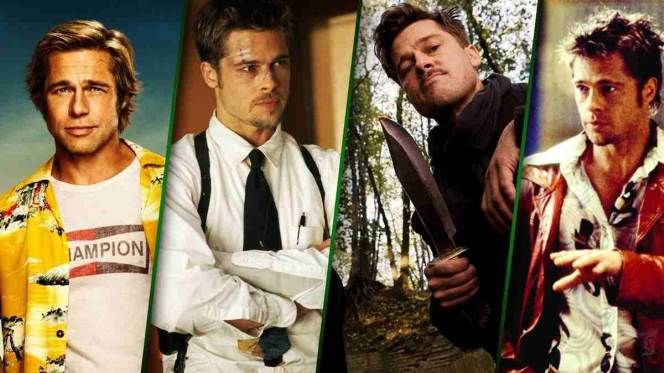
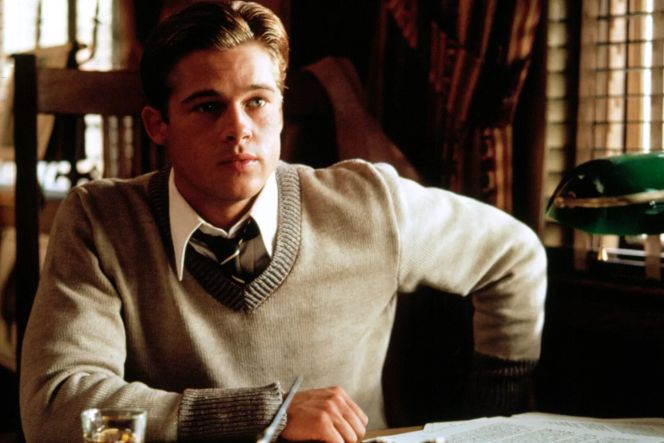
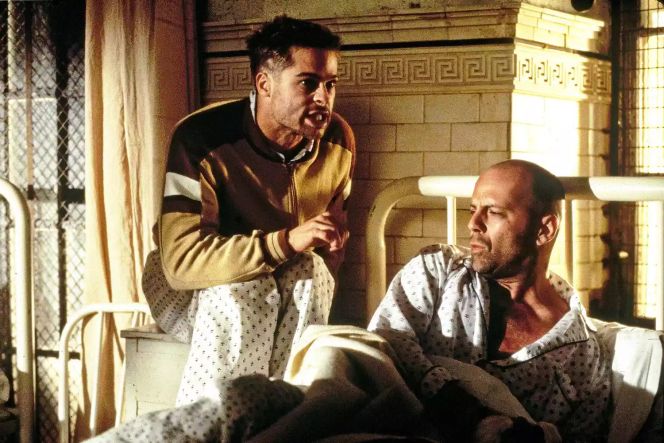
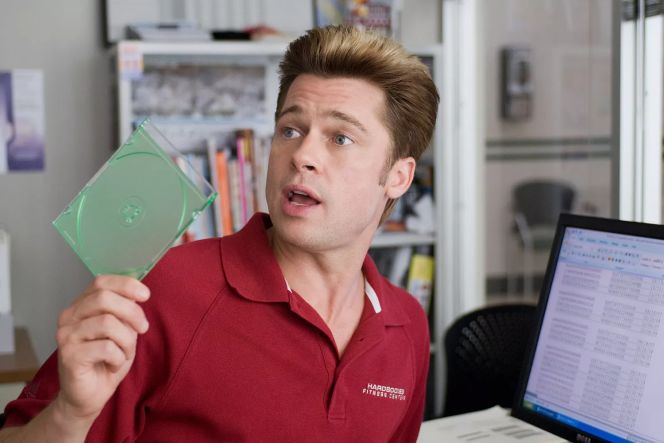
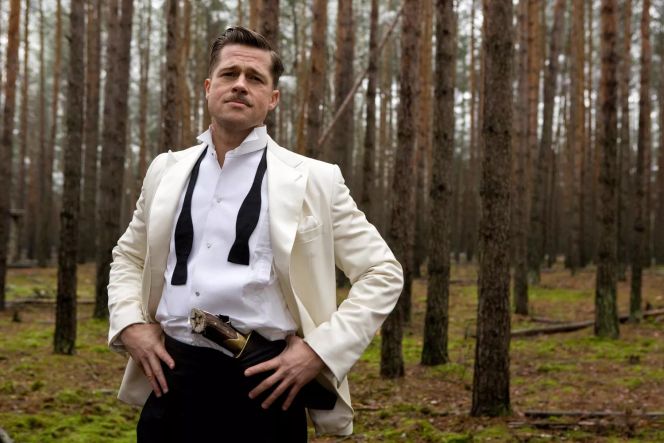
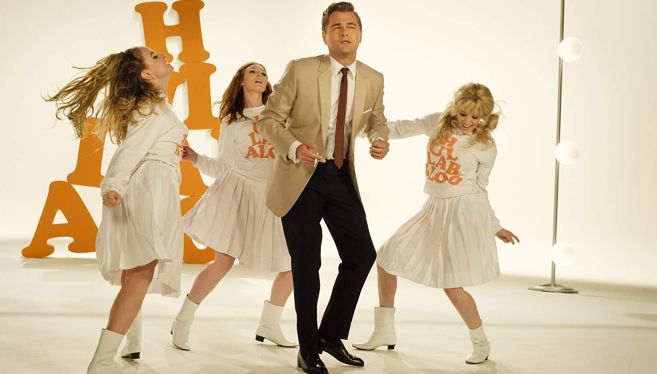
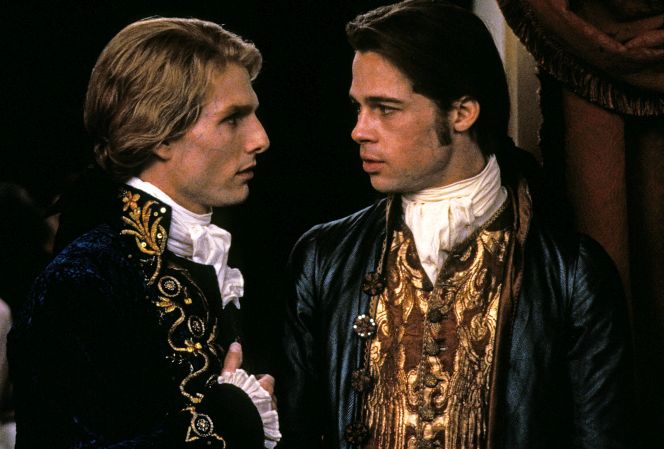
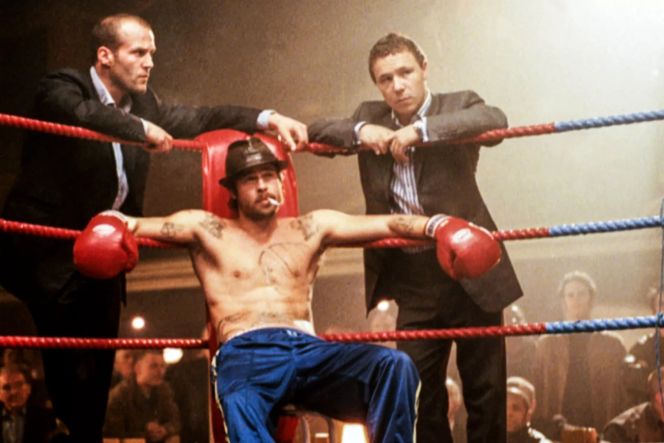

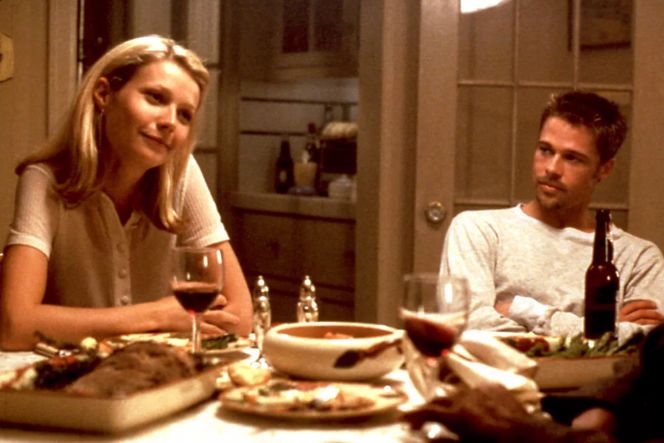
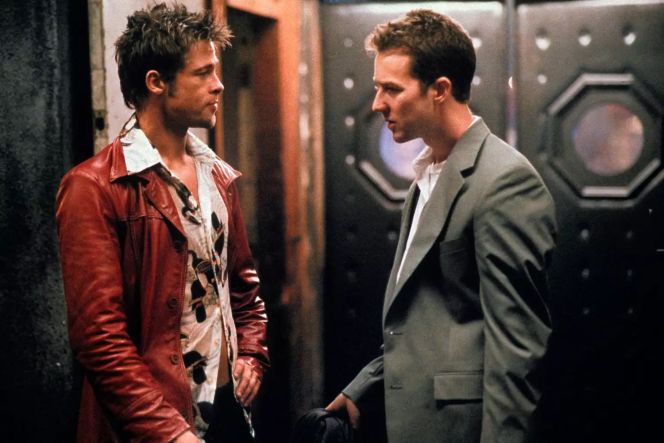

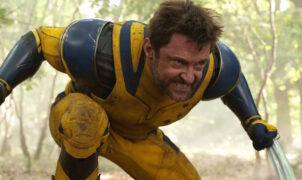
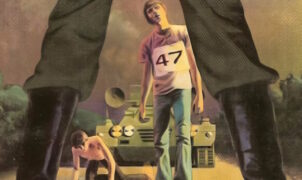



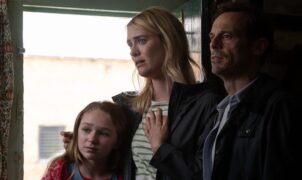
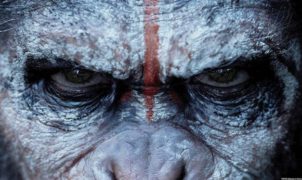
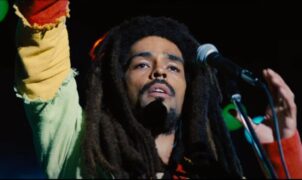
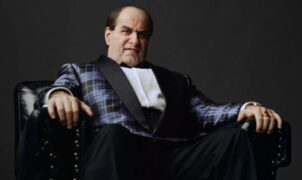




Leave a Reply